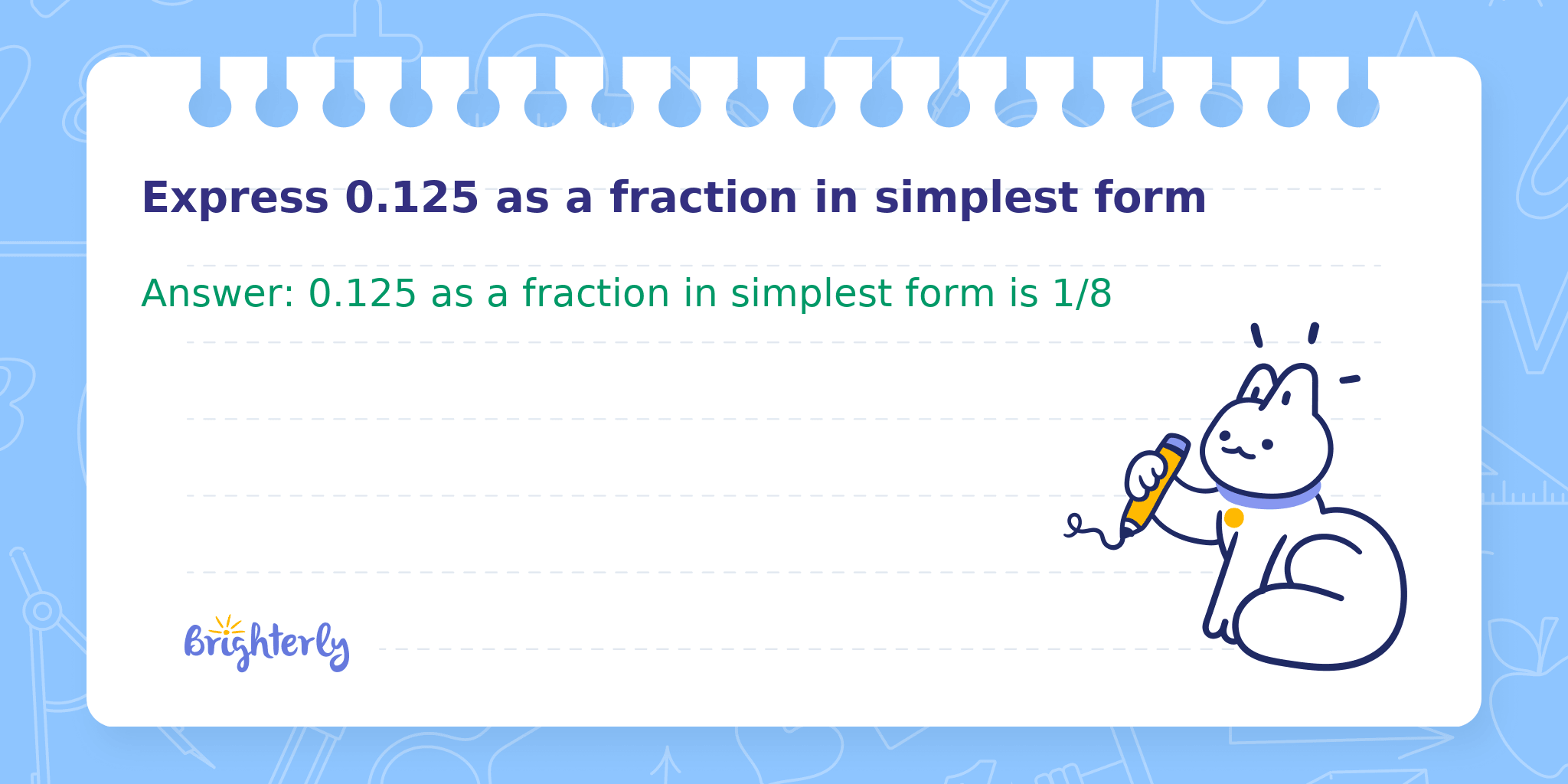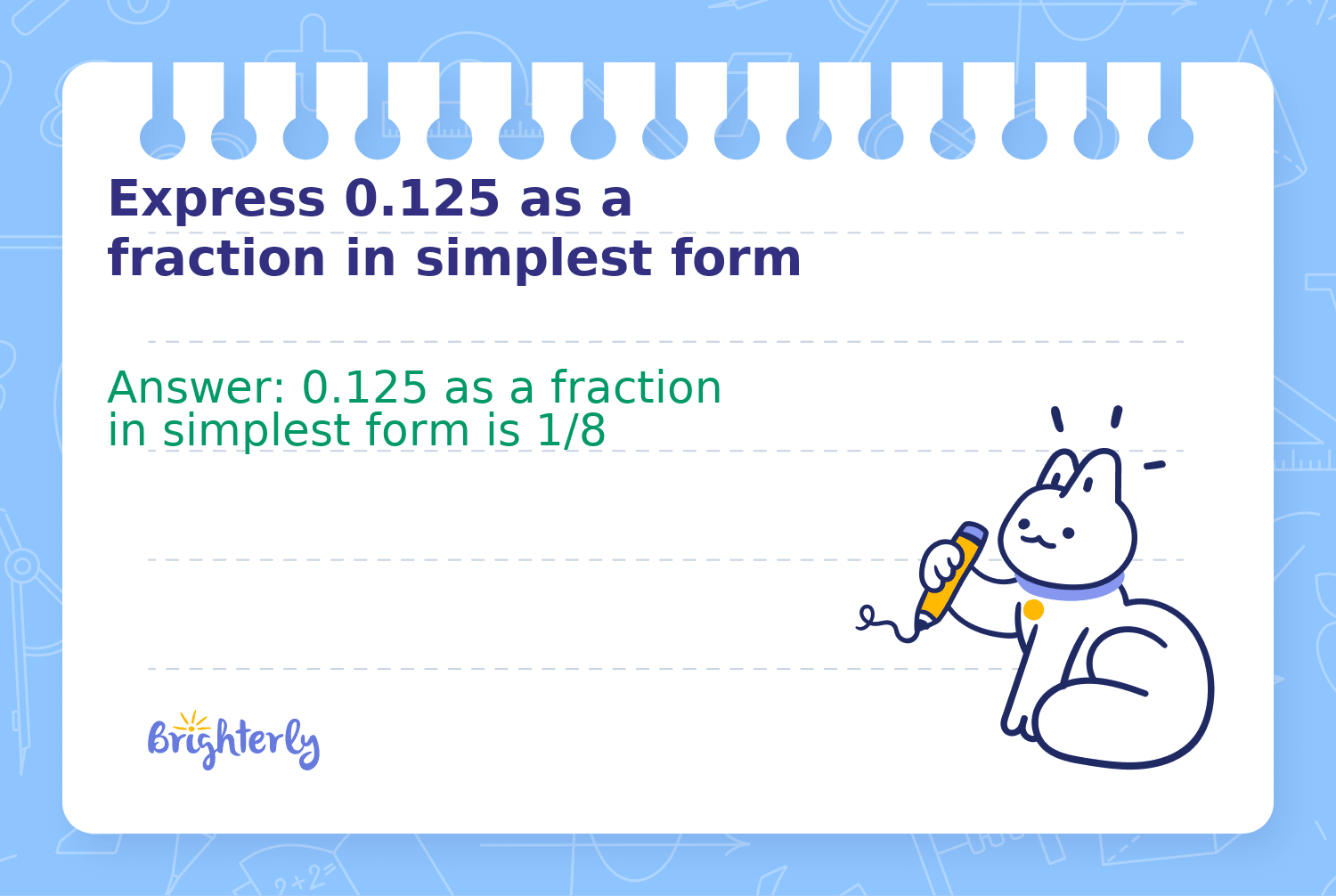
Reviewed by Marvi M. Andres
Express 0.125 as a fraction in simplest form
Answer: 0.125 as a fraction in simplest form is 1/8
Converting a decimal like 0.125 into a fraction involves rewriting the decimal as a ratio of two integers, then simplifying that ratio to its lowest terms. This is a key concept that helps connect our understanding of decimals and fractions.
Methods
Math Tutor Explanation Using Place Value Method
This method uses the value of decimal digits to write the decimal as a fraction, then simplifies it.
Step 1: Recognize that 0.125 is in the thousandths place, so write it as 125/1000
Step 2: Simplify the fraction by dividing both numerator and denominator by their greatest common divisor, which is 125
Math Tutor Explanation Using Division Method
This method also involves expressing 0.125 as a fraction and using division if necessary.
Step 1: Write 0.125 as 125 divided by 1000 (125/1000)
Step 2: Divide both numerator and denominator by 125: 125 ÷ 125 = 1, 1000 ÷ 125 = 8
Step 1:
Step 2:
Math Tutor suggests: More Practice with Decimals and Fractions
If you want to strengthen your understanding of expressing decimals as fractions in their simplest form, try solving these related problems.
FAQ on Converting Decimals to Fractions
How do you convert a repeating decimal to a fraction?
Write an equation for the decimal, set up an algebraic system, and solve for the fraction.
Why is it important to write fractions in simplest form?
Writing fractions in simplest form makes them easier to read, compare, and use in calculations.
Can all decimals be expressed as fractions?
All terminating and repeating decimals can be expressed as fractions. Non-repeating, non-terminating decimals (irrational numbers) cannot.
What is the greatest common divisor (GCD) and why is it used?
The greatest common divisor is the largest number that divides both numerator and denominator, used for simplifying fractions.


